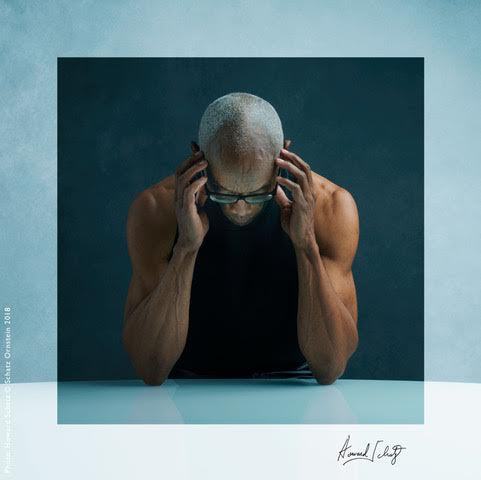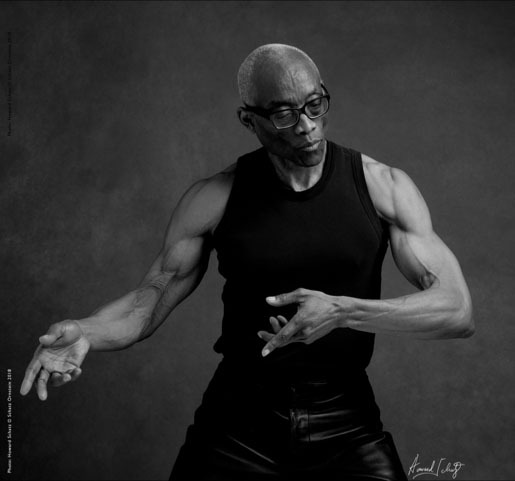On Seeing: A Journal – #254
May 8, 2018
“Bill T Jones”

I have recently begun an intriguing new project that I call
“Above and Beyond, Portraits and Interviews
of Extraordinary Individuals in Our Time.”
We have developed an ever-growing list of a few hundred highly accomplished people who have made significant contributions in dozens of fields of human endeavor. We have begun sending individual letters inviting them to participate, and have already had wonderful shoots making portraits and doing video interviews with more than half a dozen participants.
Among the first of these exceptional visitors to our studio was Bill T Jones.
Born in 1952, Jones is an American dancer, choreographer, director, and author. He is the co-founder of the Bill T. Jones/Arnie Zane Dance Company and is the Artistic Director of New York Live Arts in Manhattan, an organization with activities that include an annual season of performances, education programming, and a wide range of services for artists. Jones has choreographed for major ensembles and contributed to Broadway and other theatrical productions. He has been called “one of the most notable, recognized modern-dance choreographers and directors of our time.”
The Bill T. Jones/Arnie Zane Company has performed worldwide in over 200 cities in 40 countries. The repertory is widely varied in subject matter, visual imagery and stylistic approach to movement, voice and stagecraft.
Jones has created more than 100 works for his own company, and has also choreographed for the Alvin Ailey American Dance Theater, AXIS Dance Company, the Boston Ballet, the Lyon Opera Ballet, the Berlin Opera Ballet and the Diversions Dance Company, among many others. In 1995, Jones directed and performed in a collaborative work with Toni Morrison and Max Roach, Degga, at Alice Tully Hall, commissioned by Lincoln Center’s “Serious Fun” Festival. His collaboration with Jessye Norman, How! Do! We! Do!, premiered at New York’s City Center in 1999. Jones has won dozens of major awards including The MacArthur Fellowship, two Tony awards, Obie, Kennedy Center Honor and The National Medal of Arts.

Here are a few excerpts from the interview I did with Jones during our portrait session.
HS: How does choreography start?
BJ: When I go into the studio, it’s a blank slate. I ask the company to do something as basic as walking across the stage and I make a grouping of several shapes. Now, let’s do that same sequence but reversed. Then we make an initial gesture of some sort, in the body or in space. Now deconstruct it. Now think about what you just did and process it through the mind and the heart. That’s how it starts.
Creation is about how I can get ahead of my own biases and think about something like, What is dance? What is the opposite of dance? What is the relationship with the audience?
These are the questions that get me going.
The protagonist was always my body. Literally, my body negotiating time, space, who I’m performing for, where this body is. And it’s no exaggeration to say that there was always a sense of a trial. When you were on stage, you were being judged. Everyone, is sitting in the dark, but you’re in the light. What do they come to see? Are you there to provide some salve, some attraction for their fantasies about what you’re going to deliver? Or can you defeat that?
As my body has changed over time, the desire to express myself, to seduce, to lead, has to give way to something else. And that something else has to do with thinking.
Art-making is participation in the world of ideas.
If I am vivid enough in my argument, if I can persuade you, maybe I can touch your heart. Do I try to change the world? I try to articulate a set of questions in such a way that maybe people think about the world differently. John Cage said art was less about creation than self-realignment, rearrangement. And he believed that everything made was literally about artists discovering something about themselves.
I’m 66 years old. How many more years do I have? What do I want to make? I’m already making works with stage, musical theatre. Does it make a difference? I want it to make a difference for me. I want it to be essential to my spiritual life because that’s the only thing I can say. I wouldn’t say I’m a religious person but I do think that there is a spiritual nature in the world. Can this creativity that you and I are talking about stay with me until the last breath? I want that. I want that.

I am grateful for having had the opportunity to spend an afternoon with this elegant, and eloquent man. Have suggestions of others we ought to include? Please do let us know.